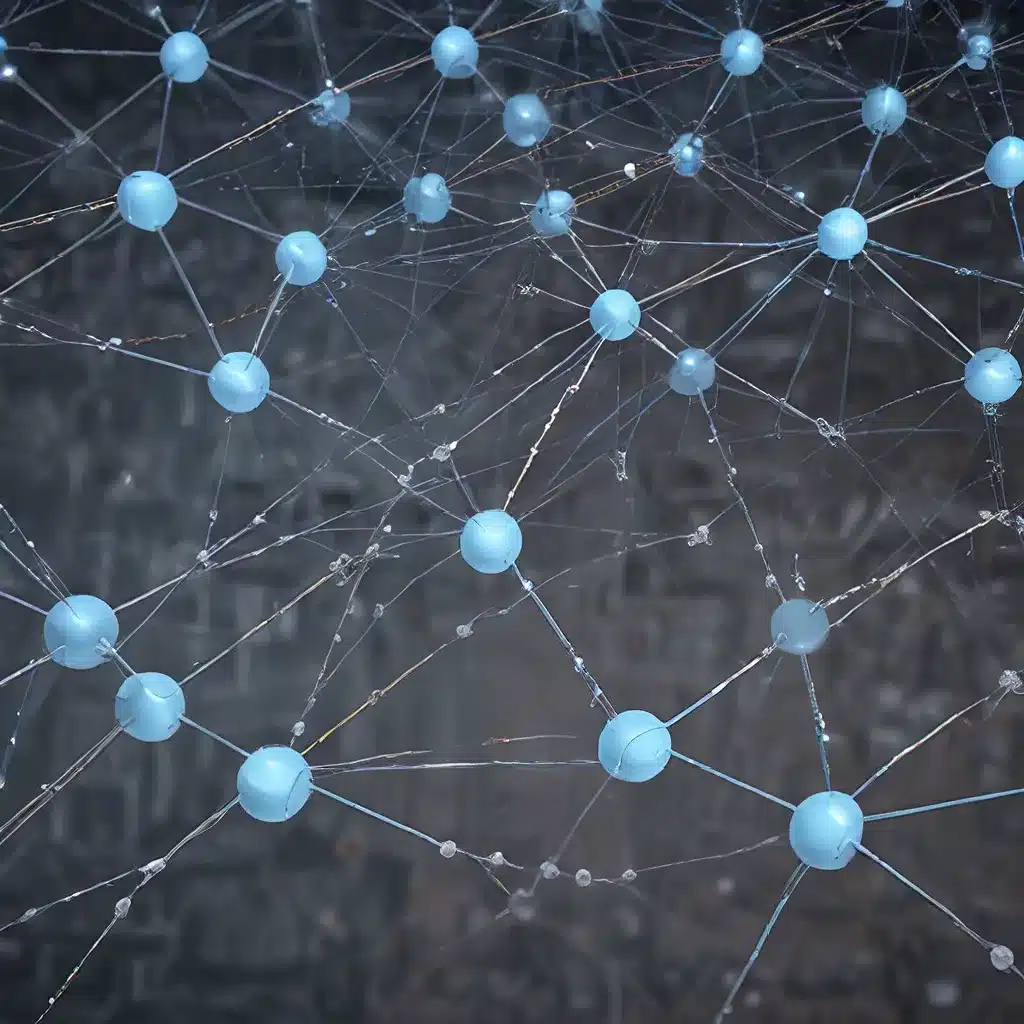
In the rapidly evolving landscape of sensor networks and the Internet of Things (IoT), the demand for robust and resilient systems has never been more crucial. As these technologies become increasingly integrated into our daily lives, from smart homes to industrial automation, the need to ensure their reliability and fault-tolerance has become a top priority.
Enhancing Robustness through Distributed Algorithms
One of the key strategies for building resilient sensor networks is the incorporation of distributed algorithms. These algorithms leverage the inherent decentralized nature of sensor networks to enhance their robustness, mitigating the risks posed by single points of failure or network disruptions.
By distributing the decision-making and processing tasks across multiple nodes, distributed algorithms increase the overall system’s resilience. If one or more nodes fail or become compromised, the remaining nodes can continue to operate, ensuring the uninterrupted flow of data and the maintenance of critical functions.
Advantages of Distributed Algorithms
-
Fault Tolerance: Distributed algorithms reduce the impact of individual node failures, allowing the network to continue functioning even in the face of disruptions or malfunctions.
-
Scalability: As sensor networks grow in size and complexity, distributed algorithms enable seamless scaling without compromising the overall system’s stability and performance.
-
Adaptability: Distributed algorithms can dynamically respond to changes in the network topology, environmental conditions, or resource availability, ensuring the system’s adaptability to evolving requirements.
-
Load Balancing: By distributing tasks across multiple nodes, distributed algorithms optimize resource utilization and prevent bottlenecks, leading to improved overall system efficiency.
-
Security Enhancements: Distributed algorithms can enhance the security of sensor networks by reducing the attack surface and limiting the impact of individual node compromises.
Implementing Distributed Algorithms
The implementation of distributed algorithms in sensor networks involves a range of techniques and approaches, each tailored to address specific challenges and requirements. Some of the common strategies include:
-
Consensus Protocols: Algorithms like Raft and Paxos enable distributed decision-making by ensuring that multiple nodes reach a consensus on critical system states and operations.
-
Gossip Protocols: These algorithms leverage peer-to-peer communication to disseminate information and reach agreement across the network, making them highly scalable and fault-tolerant.
-
Distributed Data Storage: Techniques like Distributed Hash Tables (DHTs) and Blockchain allow for the decentralized storage and retrieval of sensor data, improving data availability and integrity.
-
Distributed Optimization: Algorithms like Distributed Constraint Optimization and Distributed Auction-based Coordination enable efficient resource allocation and task coordination in sensor networks, enhancing overall performance.
-
Distributed Anomaly Detection: These algorithms leverage the collective monitoring and analysis capabilities of sensor nodes to identify and respond to anomalies or security threats in a decentralized manner.
IoT Applications and Security Considerations
The advancements in distributed algorithms have significantly expanded the potential applications of sensor networks and IoT technologies. From smart cities and industrial automation to environmental monitoring and healthcare, these distributed systems are enabling a wide range of innovative solutions.
However, as sensor networks and IoT devices become more prevalent, the security challenges have also escalated. Distributed algorithms play a crucial role in mitigating these security risks by enhancing the overall resilience of the system and limiting the impact of individual node compromises.
Securing Sensor Networks and IoT Devices
-
Secure Communication: Distributed algorithms can implement secure communication protocols, such as end-to-end encryption and mutual authentication, to protect data exchange between sensor nodes and IoT devices.
-
Decentralized Access Control: Distributed algorithms can manage access control in a decentralized manner, limiting unauthorized access and reducing the attack surface for potential intruders.
-
Distributed Intrusion Detection: Collaborative anomaly detection and threat identification algorithms can identify and mitigate security threats in a distributed and coordinated fashion, improving the overall system’s security posture.
-
Resilient Data Management: Distributed algorithms for decentralized data storage and integrity verification can safeguard sensor data against tampering and unauthorized access, enhancing data security and privacy.
-
Autonomous Mitigation: Distributed algorithms can enable autonomous response mechanisms to detect, isolate, and mitigate security incidents in real-time, reducing the impact of successful attacks.
Energy Management in Sensor Networks
In addition to enhancing robustness and security, distributed algorithms play a crucial role in optimizing energy management within sensor networks and IoT systems. Energy efficiency is a critical consideration, as sensor nodes are often battery-powered and resource-constrained.
Distributed Energy Management Strategies
-
Dynamic Load Balancing: Distributed algorithms can distribute the computational and communication load across sensor nodes, minimizing the energy consumption of individual nodes and extending the overall network lifetime.
-
Collaborative Task Scheduling: Algorithms that coordinate the scheduling of sensing, processing, and communication tasks among sensor nodes can optimize energy usage and prolong the network’s operational duration.
-
Energy-Aware Routing: Distributed routing protocols that consider the energy state of sensor nodes can direct data traffic through energy-efficient paths, reducing the overall energy consumption of the network.
-
Adaptive Duty Cycling: Distributed algorithms can dynamically adjust the duty cycles of sensor nodes, balancing the trade-off between energy consumption and data collection or processing requirements.
-
Distributed Energy Harvesting: Algorithms that coordinate the harvesting and sharing of energy resources among sensor nodes can improve the self-sustainability of the network and reduce the frequency of battery replacements.
By integrating these energy-efficient distributed algorithms, sensor networks and IoT systems can optimize their power consumption, extend their operational lifespan, and reduce the maintenance overhead associated with battery replacements or recharging.
Conclusion
In the dynamic world of sensor networks and IoT, distributed algorithms have emerged as a crucial component for enhancing robustness, improving security, and optimizing energy management. By leveraging the inherent decentralized nature of these systems, distributed algorithms enable fault-tolerant, scalable, and adaptive solutions that are essential for the widespread adoption and successful deployment of sensor network technologies.
As the complexity and scale of sensor networks continue to grow, the advancements in distributed algorithms will play a pivotal role in shaping the future of IoT, ensuring the reliability, security, and sustainability of these transformative technologies.
To stay up-to-date with the latest developments in sensor networks and IoT, be sure to visit our website at sensor-networks.org.